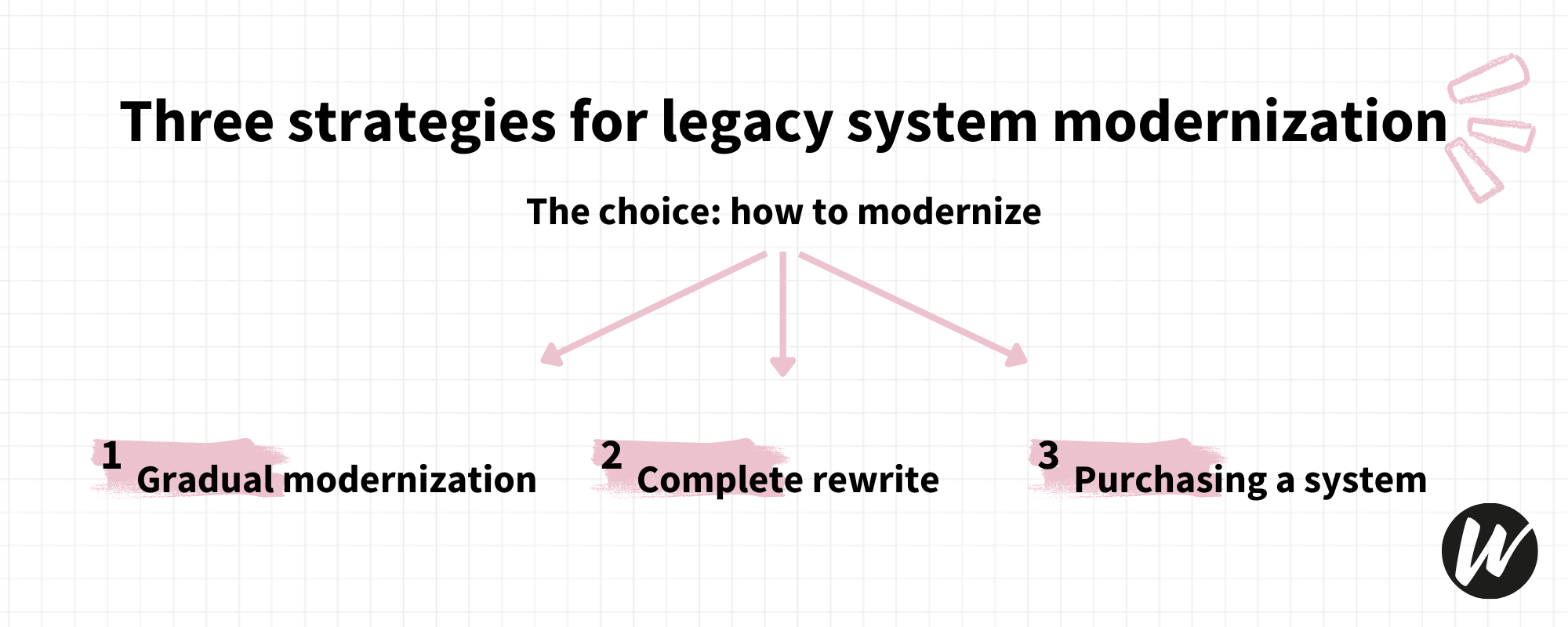Modernizing Legacy Systems - Challenges and Strategies
Legacy systems, or older IT systems, are often a significant part of the core of a company’s operations. These systems have often been around for decades and have required large investments in both time and resources. They support core business processes and handle many “special cases” and exceptions.
The problem with these systems is that they are built on outdated technology, which makes them difficult to adapt and often impossible to integrate with modern systems. They have low availability, and real-time transactions are often out of reach.
There are, of course, other problems with these systems, and when you take into account staffing and security aspects, it becomes clear that something needs to be done.
Challenges of Changing Legacy Systems
One of the biggest challenges is explaining the need for change in a way that the business side understands. Often, it is IT that sees the problems with legacy systems, but they may struggle to translate these into business terms that decision-makers can understand and act upon.
Modernization is expensive, and the value can be hard to see immediately, which often makes it easier to prioritize projects that give quick returns. “The target architecture can wait this time; we need to be pragmatic” is something you often hear in these situations. Who really wants to spend money on invisible drainage when you could fix up a nice facade instead?
Another major difficulty is the fear of disrupting daily operations. Since legacy systems are a vital part of the company’s nervous system, there is a fear that any change could lead to interruptions that affect the entire organization. How risky the modernization becomes depends on how it is done, and it is sometimes compared to “performing a heart transplant while the patient is running.”
Resistance to change is also a major challenge, as many people do not want to abandon systems they have used for years. Ironically, the systems often feel most reliable just before they are about to be replaced. Modernization also means major changes for the teams working with the systems, which can create even more resistance.
Modernizing Legacy Systems
Once the decision has been made to modernize the legacy system, there are several strategies to consider, and below three of them are outlined.
Gradual Modernization
This strategy involves replacing the legacy system with new components step by step. Instead of replacing the entire system at once, new features are introduced gradually, in parallel with the old system. This reduces risk and makes the transition smoother. By starting with the most critical parts, the company can benefit from modern features without having to wait for a complete overhaul.
Complete Rewrite
A complete rewrite means that the entire system is rebuilt from scratch using modern technology. This allows for a complete restructuring of the system and can result in better performance, scalability, and security. However, this method carries higher risks and costs as it requires a lot of time and resources. The strategy can be suitable for smaller systems.
Purchasing a System
In some cases, it may be most cost-effective to replace the legacy system with an off-the-shelf solution from an external provider. This is particularly suitable for standardized functions that do not require customization and do not change much over time. By investing in a modern off-the-shelf solution, the company can (relatively) quickly gain access to new features without a long and costly development process.
When to Use Each Strategy?
The choice of strategy for modernizing legacy systems depends on several factors, such as the current state of the system, the business need for continuous operation, the system’s functions, available resources, and long-term business goals.
• Gradual Modernization - when larger systems need to be modernized and there is a need to gradually introduce new technology without disrupting operations.
• Complete Rewrite - when the system is small in scope and/or when the system is very outdated and cannot adapt to new requirements.
• Purchasing a System - when the company needs a quick and cost-effective solution for functions that are not unique to the company’s business model, such as HR and accounting.
Conclusion
Modernizing or replacing legacy systems is ultimately necessary for companies that want to maintain their competitiveness. Regardless of which strategy is chosen, it is important that everyone involved shows commitment, patience, and perseverance to succeed with the transition.

